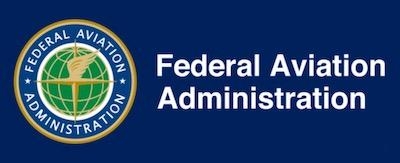Has Received Reports Of 'Blooming' When Using The Devices
The FAA recently received notification from the Air Accident Investigation Unit - Ireland (AAIU) following an investigation into an incident where a PAN-PAN (state of urgency) was declared on a commercial flight after cockpit and cabin crew reported a burning smell. When pilots subsequently donned full face masks, they reported difficulty performing flight tasks due to restricted visibility through the mask lenses.

The FAA is currently investigating the concern identified by the AAIU following this incident. We are working with the mask manufacturer, Collins Aerospace, to understand root cause and corrective action to address the issue. The part number of the Collins face mask/smoke goggles on the incident aircraft was 174692-94. However, all variations of part number 1746XX-XX could be affected by the issue (where X denotes any value).
After receiving reports from airline operators in 2017 concerning reduced visibility through the mask lens referred to as “blooming”, the company issued Service Information Letter (SIL) 1746XX-SIL001. This SIL advised operators and training organizations as to the proper cleaning methods and materials if the lens has been determined to exhibit the light to severe haze condition (blooming).
Pilots should also be advised to not use any unauthorized cleaning methods such as lens wipes or eyeglass lens cleaners, as these chemicals may actually exacerbate the blooming phenomenon. The affected mask assemblies are commonly stored in stowage boxes incorporating a test button feature that allows the pilot to verify proper function of the oxygen and communication capabilities without physically removing the mask as part of the preflight routine. Therefore, this condition could go undetected until the next scheduled maintenance/inspection interval where the aircraft maintenance manual requires a physical inspection of the mask, regulator, harness assembly, and microphone if pilots do not remove and check fit or function as part of crew preflight procedures.
Collins Aerospace estimates approximately 17,000 masks are installed in aircraft with the primary makes being Boeing and Bombardier. However, these masks are also known to be installed on, but not limited to Airbus, Embraer, Gulfstream, Cessna, Hawker Beechcraft, COMAC, and Sukhoi aircraft. Airlines and operators known to utilize these masks include Alaska Airlines, Ryan Air, American Airlines, Delta, Flybe, Air India, East Midlands, Airtran Airways, Cathay Pacific, Airinmar, Scandinavian Airlines, Northwestern Airlines, Alitalia, and FedEx. Although there are several manufacturers of full face oxygen mask assemblies and/or smoke goggles, we are unaware of the “blooming” condition being present on other masks and believe this is unique to the lens produced by Collins Aerospace.
The FAA recommends the following for operators that do not currently remove the mask to verify fit and function as part of their preflight procedures:
- Remove and physically inspect affected masks at the next scheduled maintenance interval to ensure the “blooming” condition is not present, which could restrict visibility when in use.
- Review current inspection intervals and consider a more frequent inspection to determine condition of lens if preflight checks in the Airplane Flight Manual or operational procedures do not require removal and inspection of the mask from the stowage box.
- If the visual clarity of the lens is compromised, then it should be cleaned following the instructions provided in Service Information Letter (SIL) 1746XX-SIL-001.
- Advise all flight crew and maintenance personnel to not use any other cleaning procedure or agents to clean the lenses of the affected masks.
 ANN's Daily Aero-Term (04.26.24): DETRESFA (Distress Phrase)
ANN's Daily Aero-Term (04.26.24): DETRESFA (Distress Phrase) ANN's Daily Aero-Linx (04.26.24)
ANN's Daily Aero-Linx (04.26.24) Airborne 04.22.24: Rotor X Worsens, Airport Fees 4 FNB?, USMC Drone Pilot
Airborne 04.22.24: Rotor X Worsens, Airport Fees 4 FNB?, USMC Drone Pilot Airborne 04.24.24: INTEGRAL E, Elixir USA, M700 RVSM
Airborne 04.24.24: INTEGRAL E, Elixir USA, M700 RVSM Airborne-NextGen 04.23.24: UAVOS UVH 170, magni650 Engine, World eVTOL Directory
Airborne-NextGen 04.23.24: UAVOS UVH 170, magni650 Engine, World eVTOL Directory



